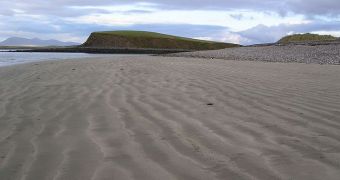Eskers and drumlins are two types of little-known landscape features that have been posing a number of questions geologists can't really answer. These structures, which are at times arranged in parallel rows, have for a long time made experts assume that they were created through the action of glaciers, over millions of years. But this explanation still leaves a number of mysteries unanswered. Now, a group of experts proposes an unusual explanation for their development, Technology Review reports.
A drumlin can be simply described as elongated tear-shaped hills, no more than a few tens of meters high, and with variable lengths, often a few hundred meters. They tend to occur in formations known as drumlin fields, which contain large number of these structures, all oriented in the same direction. Eskers are basically winding ridges, also of low altitude, which bear a close resemblance to railway embankments. They can reach impressive lengths, often exceeding hundreds of kilometers. They can even be found winding up and down hills. Both types of structures raise the same kind of questions.
Their internal structure is what throws researchers off-balance. The outer layer is normally made of water-borne clay, which naturally contains various layers. But the cores of these structures are made of conglomerated boulders and other rocks, which contain no fossil record whatsoever. In addition, they do not bear sings indicative that they were subjected to the action of water or ice, as experts expected given that glaciers are believed to be their source. Therefore, how did drumlins and eskers arise if not under the action of water, experts ask.
The second mystery is that no similar formations appear to be developing anywhere else in the world now. If they are indeed caused by glaciers, why can't researchers find a single place on the entire planet to show the same process in action? Milton Zysman and Frank Wallace recently published a new study in the online journal arXiv, showing that these formations may have in fact been caused by the fact that Earth passed repeatedly in the past through the tail of a large comet. In a way, drumlins and eskers are the remnants of the cometary debris that got stuck to our planet.
This may help account for why the internal cores of drumlins and eskers are fossil-free, and why they seem not to be affected by the water and ice around. The scientists say that the debris from the comet may also help explain the parallel and same-direction orientation that drumlin fields have. They propose that even the Ice Age, which is believed to have given birth to the formations may have been triggered by cometary dust enveloping the planet, causing a rapid and sudden cooling in the general climate, and bringing about a time of global cooling. However, the work still needs additional research before it can be considered for discussion in the international scientific community, critics state.

 14 DAY TRIAL //
14 DAY TRIAL //